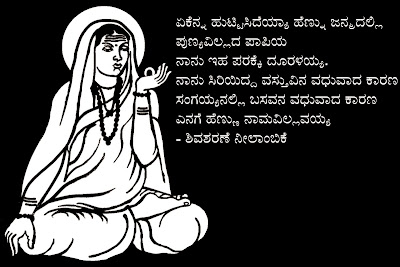Philip Meadows Taylor's "MEGALITHIC TOMBS AND OTHER ANCIENT REMAINS IN THE DECCAN" describes Rajan Kollur as a major megalithic site of Karnataka. I could find only two images of the dolmens and they happen to be Meadows Taylor's paintings in British Library Online Gallery- Large Stone Cist Grave and Stone Cist Graves. I was wondering how mush of the site was remaining. During our trip to Raichur in December 2012, we were quite near by but time was a constraint. Finally the day came.
November 26, 2013
The day started early, my first stop was Shivasharane Neelambike memorial at Tangadgi followed by Talikoti fort (I missed Muddebihal fort though we drove by it). Then on the way to Budhihal, we happened to drive by Hagaratgi - hours of research to locate this village had gone in vain but today we found it by chance :) Hagaratgi is another important prehistoric site mentioned in Meadows Taylor's book. After a quick visit to Budihal's ash mounds we drove to Kodekal and then Rajan Kollur.
On the village outskirts my inquires for "Morayara Mane" resulted in blank faces. But when I inquired "Buddara Mane" the term was recognized immediately. Its important to know the local terms.. very handy indeed. We were asked to take the dirt path running parallel to the canal and look on the left.. found it! There were 8 to 10 of them scattered over a small area, the structures were almost the same size as dolmens of Aihole. The site was open with no protection.. no efforts to preserve them?
I went around them and took pictures. Then as I was thinking if these are the only remaining dolmen, I saw two boys walking by, I hailed them and asked if there were any more dolmen nearby. Their answer made me smile.. a little further is the main site, you will see many of them.
If not for those boys I might have missed the main site, thanks to them. Here's the welcome lobby at the site, an infographic gives out basic information about our megalithic culture and megaliths here.
Transcription of some parts of the infographic:
Karnataka's megaliths
Our state has hundreds of megalithic sites that vary tremendously in size and form. Megaliths here were built between 2000 and 3400 years ago. Many coincided with the Iron Age, but few were built before the wide use of iron. Several megalithic sites now have only one or two megaliths. Others like Brahmagiri in Chitradurga district and Hirebenakal in Koppal district have hundreds of different types of megaliths. Some of these also had habitation sites associated with them.
Northern Karnataka has several large megalithic sites, especially in Gulbarga, Raichur, Koppal and Bellary districts.
One of Karnataka's best known sites
Rajankollur is among the most remarkable megalithic sites in South India. There are a variety of sandstone megaliths here. The rectangular structures with side slabs supporting a roof are called dolmens. Notice how there are different kinds, with either three or four sides, and with or without a port-hole. The partly buried, box-like structures interspersed among the dolmens are called cists. All of Rajankollur's cists have their longer side slabs projecting beyond the shorter slabs - this prevents the cist from collapsing inwards.
Resting place of the dead
When megaliths were built here 2600 to 2900 years ago, this site extended almost 360 m - more than three and half times what it is now. Some dolmens stood taller than a man and were more than 3.5m (12 feet) long. Some were surrounded by circles of ash derived from the ash mounds of the earlier, Neolithic period. Others had circles of stones, often with two slabs marking a path to the megalith.
Although these monuments are commonly believed to be houses where people lived, they were actually places for the dead. Archaeological excavations have found that the cists and dolmens held urns containing charcoal, ash and bones.

Meadows Taylor had visited Rajan Kollur in 1850 with Dr. A Walker. A detailed study of the site was carried out. The below sketch is the layout of the site. In the book Taylor says that cromlechs at Rajan Kollur's are similar to the ones at Wales. Going by the sketch, the site had more than 200 dolmens 160 years back but today less then 100 can be seen.
The care-taker has put in efforts to keep the site clean and tidy.
This is one of the largest dolmens here today, 3 or 4 more of similar size can be seen here. Went around it clock-wise.
 |
| side-rear view |
 |
| side-front view |
 |
| front view |
One of the smaller dolmens.
 |
| as seen from south-east corner |
This 5' high dolmen is probably the tallest here.
Western part of the site has most of the smaller dolmens.
Close to the south border of the enclosure was a shallow pit with matte surfaced white colored stones with violet stripes. While taking this shot from the pit I noticed a binding material between the stones.
This cream-colored material must be mortar; it is not very recent but doesn't seem to be applied when these dolmens were built.
 |
| All dolmen are oriented to north-south |
View of the site from canal bund. In the background is Rajan Kollur village.
The entire area shown below was a major settlement during Neolithic times. Hagaratgi, Budhihal, and Kodekal are also known for cairns, dolmen and ash-mounds. However, a canal from Basava Sagar (Narayanpur dam) running through this area has disturbed the terrain and must have destroyed lot of evidence.
Someday I will come back here to explore area surrounding Hagaratgi, Budhihal and Kodekal. I think Rajan Kollur is also called as Rayan-Kollur.. goes after the fort by the name Rayan-Palya.
If you are interested in seeing two more major prehistoric burial sites, do take a look at granite tombs of Hire Benakal and sandstone tombs of Aihole.
.........






























































